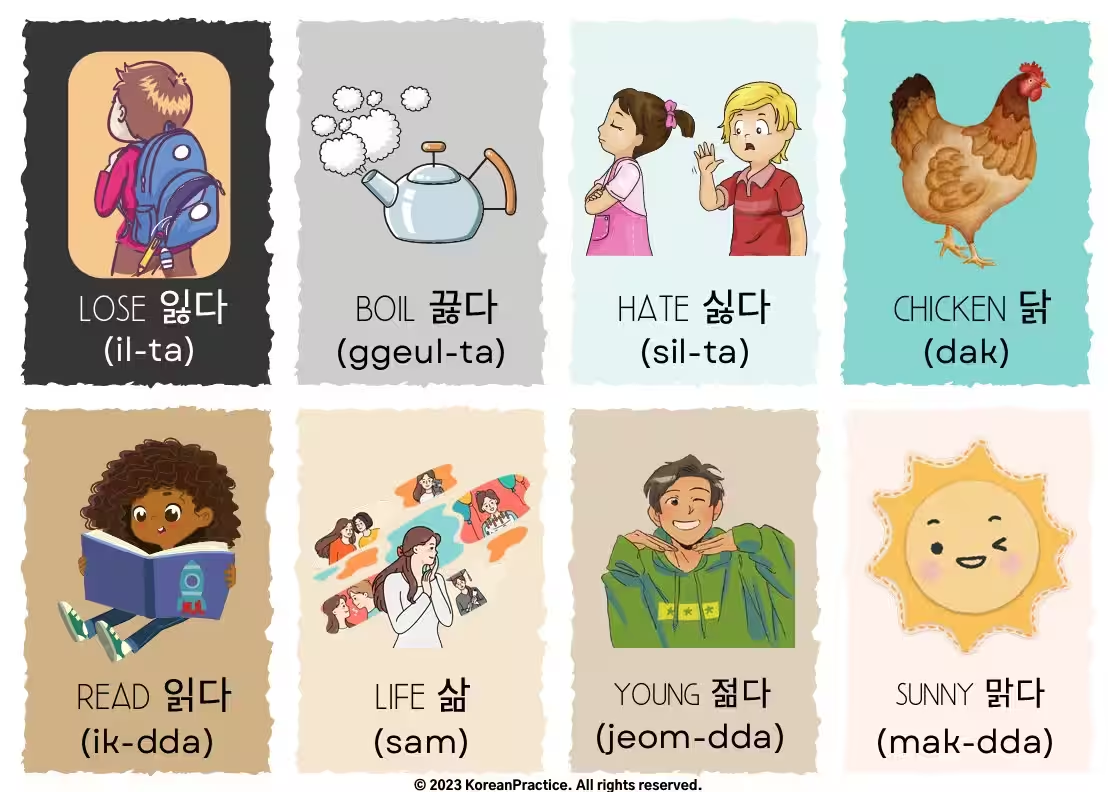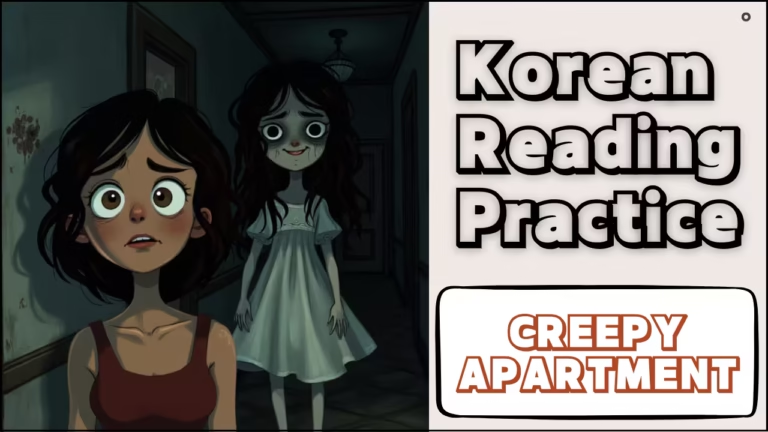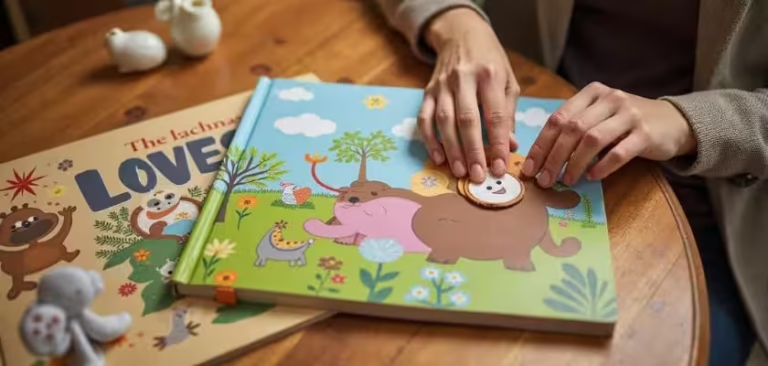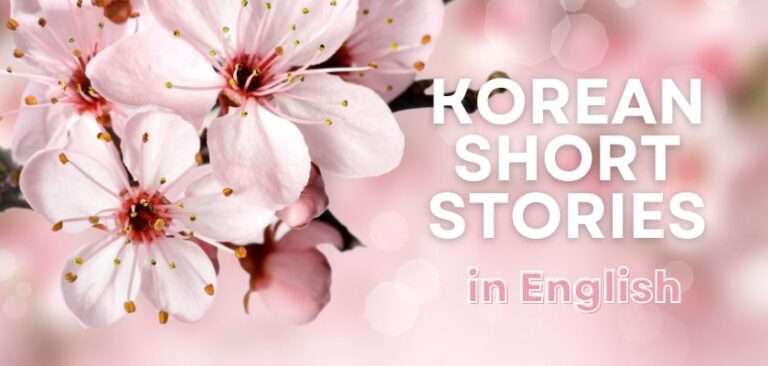Suh ChangWhoon
Written by 서 창훈, a certified Korean teacher with 14+ years of experience in Japan. He previously worked as a government officer, cybersecurity consultant, and English interpreter. Today, he teaches Korean in real classrooms without complex grammar explanations — instead, he trains students’ brains to speak naturally. His unique method is now the foundation of all his Korean courses.
Table of Contents
A simple yet emotional way to learn Korean through stories
Why I Created This Korean Story
This Korean story with English translation was inspired by a touching drama called “폭싹 속았수다 (when life gives you tangerines)”. While the story itself is different, the emotion stayed with me — especially the theme of missing family, and missing Mom.
I wanted to turn that emotion into a Korean reading practice video that’s not just about sadness — but about learning Korean in a natural, beginner-friendly way.
Start the Free Course
Still wondering how to read Korean?

This isn’t just another beginner lesson. It’s a complete system designed to change the way you think about Korean — from struggling with letters to reading real sentences, understanding the language, and speaking out loud with confidence.
Watch the Korean Story with English Translation
This is a Korean story for beginners, with audio narration, Korean subtitles, and soft illustrations.
If you’re learning Korean, try to listen to the story as a whole, rather than translating word-by-word.
Comment Below
If you watched the video, comment 읽었어요 under the video to let me know!
I always check comments — and it helps the algorithm too 🙂
What Makes This Story Special for Korean Learners
It’s designed for beginners — short, clear sentences.
It includes Korean listening comprehension and reading practice.
Each sentence comes with a simple breakdown, but not too detailed. Why?
Because I believe the best way to learn Korean is not by dissecting grammar, but by feeling the language.
My Approach: Don’t Translate — Absorb
Many Korean learners try to compare everything to English.
But Korean is a different language — with its own rhythm and logic.
That’s why I created my own method:
“Story Style Breakdown™ — where I teach Korean through simple, story-based sentence breakdowns.”
My breakdowns show you how to understand Korean as it is — without overthinking every piece.
This is how you start to listen in chunks, think in Korean, and speak naturally.
Full Korean Story with English Translation
Here’s how the story sounds and breaks down, for beginners:
Line 1
Original Korean Sentence
오늘 엄마 묘지에 갔어요.
Pronunciation Guide
오늘 (o-neul) 엄마 (eom-ma) 묘지에 (myo-ji-e) 가써요 (ga-sseo-yo).
Meaning and Context
오늘 = today
엄마 = mom
묘지에 = to the grave
갔어요 = went
English Translation
I went to my mom’s grave today.
Literal Translation
(I) went to mom grave today.
Learn Korean Through Stories: Why It Works Better Than Grammar Books
Line 2
Original Korean Sentence
엄마에게 꽃을 드렸어요.
Pronunciation Guide
엄마에게 (eom-ma-e-ge) 꼬츨 (kko-cheul) 드려써요 (deu-ryeo-sseo-yo).
Meaning and Context
엄마에게 = to mom
꽃을 = flower (object)
드렸어요 = gave (honorific)
English Translation
I gave flowers to my mom.
Literal Translation
(I) gave flower to mom.
미역국을 먹다 meaning – 3 Usage Examples & Breakdown

Start the Story Course
Looking for super easy way to learn Korean?
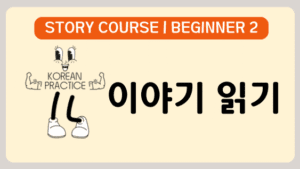
Most Korean courses stop at grammar. Mine goes beyond — with stories, Story Style Breakdown™, and real practice to help you speak.
Line 3
Original Korean Sentence
그리고 엄마에게 말했어요.
Pronunciation Guide
그리고 (geu-ri-go) 엄마에게 (eom-ma-e-ge) 말햇써요 (mal-haet-sseo-yo).
Meaning and Context
그리고 = and
엄마에게 = to mom
말했어요 = said
English Translation
And I spoke to my mom.
Literal Translation
And (I) said to mom.
Line 4
Original Korean Sentence
내가 어렸을 때, 엄마와 시냇물에서 놀았어요.
Pronunciation Guide
내가 (nae-ga) 어려쓸 때 (eo-ryeo-sseul-ttae), 엄마와 (eom-ma-wa) 시낸무레서 (si-naen-mu-le-seo) 노랐써요 (no-rat-sseo-yo).
Meaning and Context
내가 = I (subject)
어렸을 때 = when I was little
엄마와 = with mom
시냇물에서 = in the stream
놀았어요 = played
English Translation
When I was little, I played in the stream with my mom.
Literal Translation
When I was little, (I) played in stream with mom.
Master Korean present tense with this fun read: Korean Short Story for Beginners – Jungle Wildlife.
Line 5
Original Korean Sentence
엄마는 내가 제일 좋아하는 음식을 만들었어요.
Pronunciation Guide
엄마는 (eom-ma-neun) 내가 (nae-ga) 제일 (je-il) 조아하는 (jo-a-ha-neun) 음시글 (eum-si-geul) 만드렀써요 (man-deu-leot-sseo-yo).
Meaning and Context
엄마는 = mom (topic)
내가 제일 좋아하는 = my favorite
음식을 = food (object)
만들었어요 = made
English Translation
My mom made my favorite food.
Literal Translation
Mom made food that I like best.
Juseyo Meaning – What ‘주세요’ Means and How to Use It in Korean
- Most learners get confused by translations like that at first.
My course explains them with full, story-style breakdowns that finally make sense.
Line 6
Original Korean Sentence
엄마와 같이 책을 읽었어요.
Pronunciation Guide
엄마와 (eom-ma-wa) 가치 (ga-chi) 채글 (chae-geul) 일거써요 (il-geo-sseo-yo).
Meaning and Context
엄마와 = with mom
같이 = together
책을 = book (object)
읽었어요 = read
English Translation
I read books with my mom.
Literal Translation
(I) read book together with mom.
Food in Korean – 9 Popular Food with Easy Examples
Line 7
Original Korean Sentence
어느 날, 엄마가 병이 들었어요.
Pronunciation Guide
어느 날 (eo-neu-nal) 엄마가 (eom-ma-ga) 병이 (byeong-i) 드러써요 (deu-reot-sseo-yo).
Meaning and Context
어느날 = one day
엄마가 = mom (subject)
병이 들었어요 = got sick
English Translation
One day, my mom got sick.
Literal Translation
One day mom Illness came in(to the body).
Introducing Enchanting Korean Short Stories in English: Flower Friends
Line 8
Original Korean Sentence
며칠 후, 엄마는 돌아가셨어요.
Pronunciation Guide
며칠 후 (myeo-chil hu), 엄마는 (eom-ma-neun) 도라가셧써요 (do-ra-ga-syeot-sseo-yo).
Meaning and Context
며칠 후 = a few days later
엄마는 = mom (topic)
돌아가셨어요 = passed away
English Translation
A few days later, my mom passed away.
Literal Translation
A few days later, mom passed away.
Line 9
Original Korean Sentence
비가 그치고, 무지개가 떴어요.
Pronunciation Guide
비가 (bi-ga) 그치고 (geu-chi-go), 무지개가 (mu-ji-gae-ga) 떳써요 (tteot-sseo-yo).
Meaning and Context
비가 = rain (subject)
그치고 = stopped and
무지개가 = rainbow (subject)
떴어요 = appeared
English Translation
The rain stopped and a rainbow appeared.
Literal Translation
Rain stop, and rainbow appeared.
Line 10
Original Korean Sentence
엄마가 몹시 그리워요.
Pronunciation Guide
엄마가 (eom-ma-ga) 몹씨 (mop-ssi) 그리워요 (geu-ri-wo-yo).
Meaning and Context
엄마가 = mom (subject)
몹시 = very
그리워요 = I miss (her)
English Translation
I miss my mom so much.
Literal Translation
(I) miss mom so much.
Line 11
Original Korean Sentence
엄마, 나 이제 갈게.
Pronunciation Guide
엄마 (eom-ma), 나 (na) 이제 (i-je) 갈께 (gal-kke).
Meaning and Context
엄마 = mom
나 = I
이제 = now
가다 = go
ㄹ게 = I’ll
English Translation
Mom, I’ll go now.
Korean Short Story for Beginners with Korean Present Tense: Jungle Wildlife
Practice the present tense naturally through [this beginner Korean short story set in the jungle].
Line 12
Original Korean Sentence
엄마와의 추억이 늘 그리워요.
Pronunciation Guide
엄마와에 (eom-ma-wa-e) 추어기 (chu-eok-i) 늘 (neul) 그리워요 (geu-ri-wo-yo).
Meaning and Context
엄마와의 = with mom (possessive)
추억이 = memories (subject)
늘 = always
그리워요 = I miss (them)
English Translation
I always miss the memories with my mom.
Literal Translation
(I) always miss memory with mom.
Still confused by Korean grammar? Here’s why you’re struggling—and what to do instead.
Korean Subtitles Practice & More
This video also works well if you want to practice:
Korean subtitles reading
Beginner Korean grammar in context
Real sentence flow for listening comprehension
It’s much more than vocabulary.
It’s the emotional feeling of Korean — something textbooks can’t teach.
From My Original Story Style Breakdown™ — A New Way to Truly Understand Korean
This is just one sentence from a complete learning system you won’t find anywhere else. — designed to help you understand Korean naturally, without getting lost in grammar rules.
When you can truly understand Korean sentences this way, speaking becomes much easier.
🚀 Quick Learning

Original Korean Sentence
사자가 코끼리를 잡아요.
Pronunciation Guide
사자가 (sa-ja-ga) 코끼리를 (ko-ggi-ri-reul) 자바요 (ja-ba-yo).
English Translation
The lion catches the elephant.
Literal Translation
Lion catch elephant.
Quick Reference
사자가 (lion) 코끼리를 (elephant) 잡아요 (catch).
💡 Need more details? Click “Deep Learning” below!
🔍 Deep Learning
Meaning and Context
사자 (lion)
→ The lion — the one taking action now in the story.
가 (subject marker)
→ Points out that the lion is doing the action.
코끼리 (elephant)
→ The one the action is done to.
를 (object marker)
→ Shows that the elephant is the object being caught.
잡 (to catch, grab, take)
→ The action — the lion catches or grabs the elephant.
아요 (polite ending)
→ I’m telling you this in a polite and friendly way.
Real-Life Usage
잡아요 is common when talking about catching or holding something.
Pattern Practice
1. 사자가 토끼를 잡아요.
2. 고양이가 쥐를 잡아요.
3. 아이가 공을 잡아요.
4. 강아지가 공을 잡았어요.
Free Korean Flashcard
FAQs (What You Might Still Wonder About)
1. ❓ How does the Story Style Breakdown™ method work in this Korean Story with English Translation?
The Story Style Breakdown™ method in this Korean Story with English Translation helps you learn naturally by exposing you to full sentences in a real-life story context. Instead of dissecting grammar rules, you listen to and read each Korean sentence, then see a simple breakdown that focuses on meaning and structure. This improves your Korean listening comprehension and reading skills without overwhelming you with technical details.
2. ❓ Why is it important to avoid comparing English to Korean in this Korean Story with English Translation?
This Korean Story with English Translation emphasizes learning Korean as a unique language with its own structure and rhythm. Comparing Korean directly to English often leads to confusion or misinterpretation. By experiencing the sentences as they are presented in the story, you absorb grammar patterns and expressions more naturally—especially when supported by the sentence breakdown format.
3. ❓ How does this Korean Story with English Translation improve listening comprehension?
Listening to the Korean Story with English Translation while reading the subtitles helps train your ears to recognize Korean sounds and sentence patterns. The audio narration is paced for learners, and the accompanying breakdown lets you understand each sentence clearly. This method strengthens your Korean listening comprehension without needing to constantly pause or translate word-for-word.
4. ❓ Are the sentence breakdowns in this Korean Story with English Translation suitable for beginners?
Absolutely. This Korean Story with English Translation is designed with beginners in mind. The sentence breakdowns simplify the structure by focusing on sentence-level meaning. Each line includes pronunciation, word meanings, and natural translation—so even if you’re just starting out, you can follow along, understand the context, and build confidence.
5. ❓ Can I learn vocabulary effectively through this Korean Story with English Translation?
Yes! While the story’s main goal is reading and listening practice, it naturally introduces common family-related vocabulary (like 엄마 “mom,” 묘지 “grave,” 꽃 “flowers”). You can download the free flashcards linked in the blog post to review and reinforce these words. Using the story in context—rather than isolated word lists—helps you remember vocabulary more effectively.
Final Thoughts: Learn Korean Through Stories, Not Stress
If you’re looking for a Korean story with English translation that goes beyond vocabulary lists and grammar charts, Missing Mom offers a heartfelt entry point. Inspired by a sad Korean drama story, this short reading and listening exercise gives beginners an emotional context for language learning—something that sticks with you far longer than flashcards alone.
Whether you’re working on Korean reading practice, building confidence with Korean subtitles practice, or training your ear for Korean listening comprehension, this kind of story-centered learning is one of the most powerful methods. And because this is a Korean story for beginners, it’s designed to feel simple—even when the emotions run deep.
This isn’t just language. It’s connection. And that’s why stories like these work.


